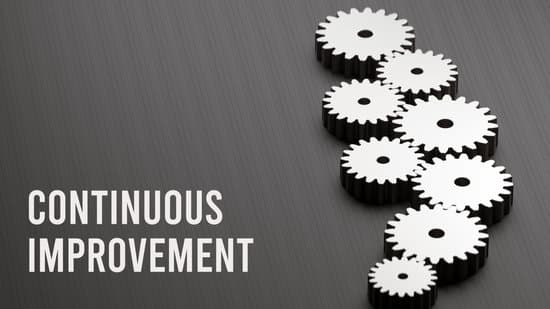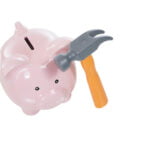The VA loan program is a valuable benefit for eligible veterans, active duty service members, and surviving spouses, providing them with the opportunity to purchase or refinance a home with favorable terms. However, can a VA loan be used to improve a home?
In this article, we will explore the potential for using a VA loan to fund home improvement projects and the benefits it can offer to borrowers. From understanding the eligibility requirements to the types of home improvements covered and the process of using a VA loan for home improvement, we will delve into all aspects of leveraging this unique financing option.
When it comes to making improvements to their homes, many homeowners may not be aware that they can use a VA loan for this purpose. The ability to finance home improvements through a VA loan has its own set of advantages, which we will analyze in detail throughout this article.
By considering the cost savings and flexible terms associated with using a VA loan for home improvement projects, borrowers can determine if this option aligns with their specific needs and goals.
Moreover, we will also address the potential drawbacks and limitations of using a VA loan for home improvement while highlighting the benefits and advantages compared to traditional home improvement loans. By weighing these factors against each other, readers will gain insight into whether leveraging a VA loan for their specific home improvement needs is the right choice.
Join us as we uncover all aspects of using a VA loan to enhance your living space and make your dream home a reality.
Benefits of Using VA Loan for Home Improvement
Using a VA loan for home improvement offers several key benefits that set it apart from other types of home improvement loans. Veterans and active duty service members can take advantage of these benefits to make significant upgrades to their homes without the financial strain often associated with renovation projects.
Advantages Over Other Home Improvement Loans
One of the primary benefits of using a VA loan for home improvement is that it typically offers lower interest rates compared to traditional home improvement loans. This can result in considerable cost savings over the life of the loan. Additionally, VA loans often do not require a down payment, allowing homeowners to finance their home improvements without having to come up with a large sum of money upfront.
Cost Savings and Flexible Terms
VA loans also come with flexible terms, allowing borrowers to select repayment plans that best fit their financial situation. This flexibility can make it easier for homeowners to manage the costs of their home improvement projects without straining their budget.
Furthermore, VA loans may offer longer repayment periods compared to other types of financing, spreading out the cost of the improvements over a more manageable timeframe. Overall, these benefits can make using a VA loan an attractive option for veterans and active duty service members looking to improve their homes.
Eligibility Requirements for Using VA Loan for Home Improvement
Specific Criteria and Qualifications
To use a VA loan for home improvement, there are specific criteria and qualifications that individuals must meet. First and foremost, the borrower must be eligible for a VA home loan, which typically requires serving in the military or being a veteran. Additionally, the property being improved must be the borrower’s primary residence. Meeting these criteria is essential to qualify for using a VA loan for home improvement.
Checking Eligibility
Individuals can determine their eligibility for a VA loan by obtaining a Certificate of Eligibility (COE) from the Department of Veterans Affairs. This document verifies that the borrower meets the requirements to obtain a VA loan, including using it for home improvement purposes. The process of obtaining a COE can typically be done online through the VA’s official website or by working with an approved lender who can assist in obtaining this important document.
Additional Considerations
While meeting basic eligibility requirements is crucial, borrowers should also consider their credit history, income, and debt-to-income ratio when applying for a VA loan for home improvement. Lenders may have additional requirements or considerations when reviewing an individual’s overall financial situation. It’s important to understand all aspects of eligibility before pursuing a VA loan for home improvement to ensure a smooth application process and approval.
Types of Home Improvements Covered by VA Loan
The types of home improvements covered by a VA loan are quite extensive, making it a versatile option for veterans looking to make upgrades to their homes. One of the primary benefits of using a VA loan for home improvement is that it can be used for both minor and major renovations.
This means that simple projects such as replacing flooring or updating kitchen cabinets, as well as more substantial undertakings like adding an extra room or renovating a bathroom, can all be financed through a VA loan.
In addition to these traditional home improvement projects, VA loans can also be used for energy-efficient upgrades. This includes installing solar panels, energy-efficient windows, or upgrading HVAC systems to improve the overall energy efficiency of the home. These environmentally friendly improvements not only benefit the homeowner in terms of reduced utility costs but also contribute to a more sustainable living space.
It’s important to note that while there is flexibility in the types of home improvements covered by a VA loan, the property must still meet certain requirements. For example, any structural alterations or additions must comply with local building codes and zoning laws.
Additionally, the improvements should add value to the property and be deemed necessary for the homeowner’s comfort and wellbeing. By understanding what types of home improvements are covered by a VA loan, veterans can make informed decisions about how to best utilize this financing option for their specific needs.
Process of Using VA Loan for Home Improvement
Using a VA loan for home improvement can provide veterans and service members with a convenient and cost-effective way to finance renovation and remodeling projects. The process of using a VA loan for home improvement involves several important steps to ensure that the project is approved and funded properly. Below is a detailed overview of the process involved in using a VA loan for home improvement:
1. Determine Eligibility: The first step in using a VA loan for home improvement is to verify eligibility. This involves confirming that the borrower meets the specific criteria set forth by the Department of Veterans Affairs. Eligibility requirements may include meeting minimum service requirements, obtaining a Certificate of Eligibility (COE), and fulfilling any additional qualifications.
2. Select Approved Lender: Once eligibility is confirmed, borrowers can choose an approved lender who specializes in VA loans. It is important to select a reputable lender with experience in handling VA loans, as this will ensure a smooth and efficient application process.
3. Obtain Quotes and Estimates: Before applying for the VA loan, homeowners should obtain quotes and estimates from licensed contractors for the proposed home improvement project. These estimates will be used during the loan application process to determine the amount of funding needed.
4. Apply for VA Loan: With eligibility confirmed and contractor estimates in hand, borrowers can then apply for the VA loan through their chosen lender. The application process typically involves providing documentation such as income verification, credit history, and details of the planned home improvement project.
5. Approval and Disbursement: Once the VA loan application is submitted, it undergoes review by the lender and ultimately receives approval from the Department of Veterans Affairs. Upon approval, funds are disbursed directly to the borrower or contractor as needed to begin and complete the home improvement project.
By following these steps, eligible veterans and service members can successfully navigate the process of using a VA loan for home improvement, leading to positive changes in their homes while taking advantage of favorable financing options tailored specifically for their needs.
Pros and Cons of Using VA Loan for Home Improvement
Using a VA loan for home improvement offers several advantages, including competitive interest rates, no down payment requirements, and the ability to finance up to 100% of the home’s value. This can be especially beneficial for veterans or service members who may not have substantial savings to put towards a traditional home improvement loan.
Additionally, VA loans often come with more flexible terms and lower closing costs compared to conventional mortgage loans, making them an attractive option for those looking to make improvements to their homes.
However, there are some potential drawbacks to consider when using a VA loan for home improvement. One issue is that there may be limits on the types of renovations that can be financed with a VA loan, as certain luxury items or non-essential features may not qualify.
Additionally, there are strict appraisal requirements for VA loans, which means the property must meet certain standards in order to qualify for financing. Another consideration is that while VA loans do not require private mortgage insurance (PMI), they do come with a funding fee that may need to be paid upfront or rolled into the loan amount.
Despite these potential drawbacks, the benefits of using a VA loan for home improvement often outweigh the limitations. For veterans and service members who meet the eligibility requirements, a VA loan can provide significant financial assistance when it comes to making necessary improvements to their homes.
| Advantages | Drawbacks |
|---|---|
| Competitive interest rates | Limits on types of renovations that can be financed |
| No down payment requirements | Strict appraisal requirements |
| Flexible terms | Funding fee required |
Tips for Maximizing VA Loan Benefits for Home Improvement
When using a VA loan for home improvement, there are several tips and strategies that can help maximize the benefits of this type of financing. Here are some practical suggestions for homeowners considering utilizing a VA loan for their home improvement projects:
- Understand the Limitations: Before getting started with any home improvement project using a VA loan, it’s essential to understand the specific guidelines and restrictions set forth by the Department of Veterans Affairs. Familiarize yourself with what types of improvements are eligible and any limitations on project scope.
- Work with Reputable Contractors: When using a VA loan for home improvement, it’s crucial to find trustworthy and reliable contractors. Look for professionals who have experience working with VA loans and are familiar with the unique requirements involved in these types of projects.
- Obtain Multiple Quotes: To ensure you are getting the best value for your home improvement project, obtain multiple quotes from different contractors. This allows you to compare costs, services, and timelines to make an informed decision.
Additionally, it’s important to consider how the improvements will impact the overall value and functionality of your home. Some upgrades may provide a higher return on investment than others, so carefully evaluate which improvements will best suit your needs and goals while considering future resale value.
By following these tips, homeowners can make the most of their VA loan benefits when embarking on home improvement projects, ensuring that they achieve the desired results while maximizing cost savings and overall value.
Case Studies and Success Stories
Using a VA loan for home improvement can be a beneficial option for many homeowners, as evidenced by numerous success stories and case studies. One such example is the Smith family, who utilized a VA renovation loan to upgrade their outdated kitchen and bathroom.
With the help of their lender, they were able to finance the costs of the renovations while taking advantage of the flexible terms and potentially lower interest rates offered by the VA loan program. As a result, they were able to increase the value and functionality of their home without having to worry about substantial out-of-pocket expenses.
In another case study, the Johnsons used a VA cash-out refinance loan to fund an extensive home improvement project that included adding a new room to accommodate their growing family. By tapping into their home equity through the VA loan program, they were able to secure a competitive interest rate and favorable repayment terms, allowing them to achieve their renovation goals without facing financial strain.
This success story illustrates how VA loans can provide homeowners with the means to make significant improvements to their properties while maintaining financial stability.
These real-life examples demonstrate the positive impact that using a VA loan for home improvement can have on homeowners and their properties. By leveraging the benefits of VA loans, individuals have been able to transform their living spaces, increase property values, and enhance overall quality of life.
These case studies serve as inspiration for those considering utilizing a VA loan for their own home improvement projects, showcasing how this financing option can make a meaningful difference in achieving renovation goals.
Conclusion
In conclusion, it is evident that a VA loan can indeed be used to improve a home, providing veterans and active-duty service members with a valuable option for financing their home improvement projects. The benefits of using a VA loan for home improvement are numerous, including potential cost savings, flexible terms, and the ability to finance a wide range of home improvement projects.
Additionally, the eligibility requirements for using a VA loan for home improvement are specific but attainable for those who have served or are serving in the military.
Overall, the process of using a VA loan for home improvement involves careful consideration of the types of improvements covered by the loan, as well as an understanding of the necessary paperwork and approvals required. While there may be some drawbacks and limitations to using a VA loan for home improvement, the advantages often outweigh these concerns, especially when compared to traditional home improvement loans.
It is clear that maximizing the benefits of a VA loan for home improvement requires thorough research and preparation. By exploring this option and taking advantage of the tips provided, homeowners can make informed decisions about their home improvement projects while potentially experiencing significant positive outcomes. Therefore, if you are eligible for a VA loan and considering improving your home, it is worth exploring this option further to see if it aligns with your needs and goals.
Frequently Asked Questions
Can a VA Loan Be Used for Improvement?
Yes, a VA loan can be used for improvement. Borrowers can use a VA renovation loan to finance the purchase of a home that needs repairs or updates. This allows qualified veterans to borrow additional funds above the purchase price to cover renovation costs.
Can You Use a VA Loan for a Pool?
Yes, it is possible to use a VA loan for a pool. However, there are some restrictions and guidelines that need to be followed. The pool must be considered a permanent fixture and add value to the property. It’s important for borrowers to discuss their plans with their lender and ensure that the pool meets all necessary requirements.
What Is VA Loan Restoration?
VA loan restoration is a process by which veterans who have previously utilized their VA home loan entitlements can have those benefits restored in order to purchase another home with a VA loan.
This is typically done through the process of selling or paying off the original VA loan in full, allowing the veteran to regain their entitlement and potentially qualify for another VA home loan in the future.

I’m thrilled to have you here as a part of the Remodeling Top community. This is where my journey as an architect and remodeling enthusiast intersects with your passion for transforming houses into dream homes.





